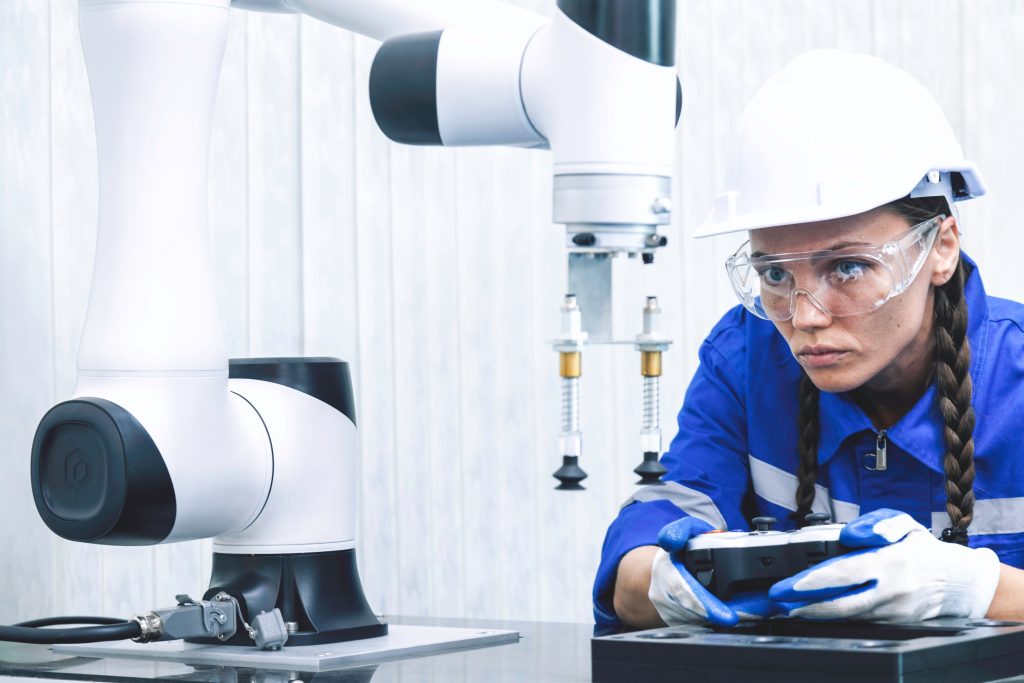Cobot – all you need to know about collaborative robots
In recent years, the landscape of industrial automation has been reshaped by the emergence of collaborative robots, commonly known as cobots. These innovative machines represent a significant advancement in robotics, offering a unique blend of automation and human interaction.
Cobots are designed to work in sync with human workers. With their ability to automate repetitive tasks while ensuring safety and efficiency, cobots have quickly become integral components of modern industrial settings.
In this article, we will cover some essential aspects of the wide area of cobots, including some basic information as well as benefits and applications of cobots.
What is a cobot?
A cobot is a collaborative robot designed to work alongside human operators in a shared workspace. Unlike traditional industrial robots, cobots are optimized for physically interacting with humans.1
Cobots may feature adaptable robot arms capable of handling various payloads. With customized end-effectors, they excel in specific robot applications across diverse industries. These machines prioritize human-robot collaboration, automating repetitive tasks to enhance overall efficiency in the work environment.
Cobot or industrial robot: The differences
Comparing collaborative robots (cobots) and industrial robots reveals critical differences. Traditional industrial robots operate autonomously in isolated settings. Typically, industrial robots are not designed to allow human interaction, as they do not feature the required safety technologies. They are optimized for manufacturing environments, such as in the automotive or in the pharmaceutical industry.
In contrast to robots, cobots open up a new level of collaboration, as they are designed to work alongside human counterparts, requiring both safety features and adaptability.
Benefits of collaborative robots
There are several benefits of cobots that their implementation brings in various applications, most of all in industrial settings. Cobots boast versatile payload capacities, making them adaptable to a wide range of applications. Their user-friendly design ensures easy integration into workflows, enhancing overall efficiency.
The main – and most obvious – benefit of cobots is based on how cobots work alongside humans. The collaboration between human workers and cobots significantly influences product quality, especially in tasks requiring precision and stringent quality control along with versatility. Cobots may take over routine operations or fields where human capabilities in terms of strength, precision, or efficiency no longer suffice. This allows human workers to focus on more complex tasks, ultimately making the entire process cost-effective.
Applications – cobots across various industries
Cobots find a variety of applications across different industries; key areas of cobot applications include:



Comments